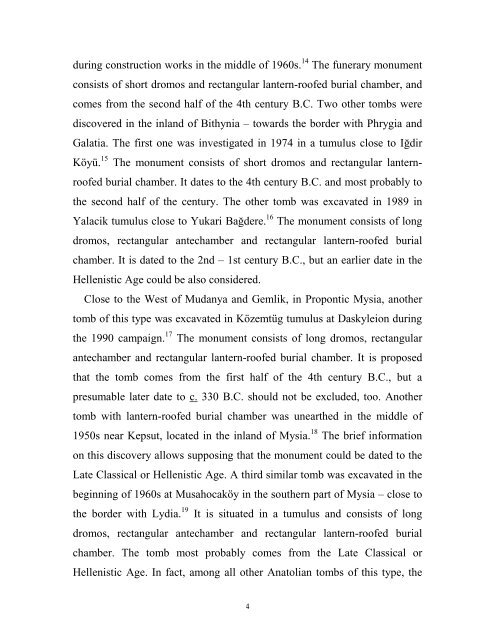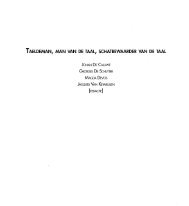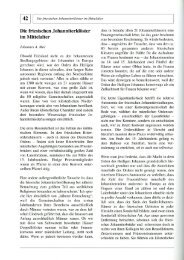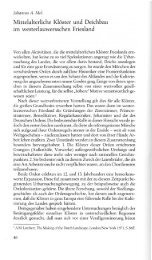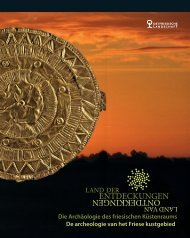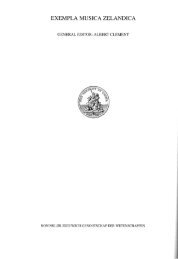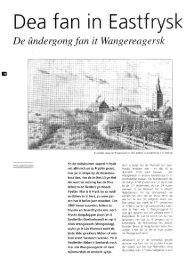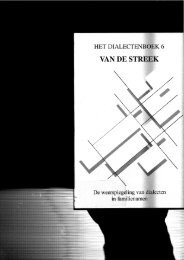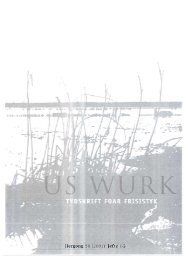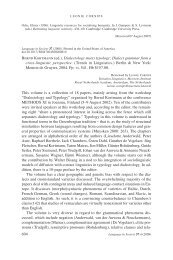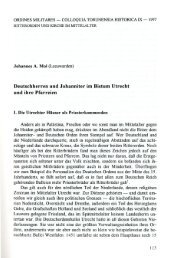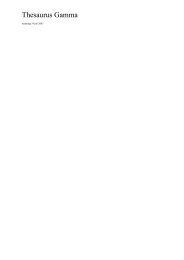The Lantern-Roofed Tombs in Thrace and Anatolia: Some Evidence ...
The Lantern-Roofed Tombs in Thrace and Anatolia: Some Evidence ...
The Lantern-Roofed Tombs in Thrace and Anatolia: Some Evidence ...
You also want an ePaper? Increase the reach of your titles
YUMPU automatically turns print PDFs into web optimized ePapers that Google loves.
dur<strong>in</strong>g construction works <strong>in</strong> the middle of 1960s. 14 <strong>The</strong> funerary monument<br />
consists of short dromos <strong>and</strong> rectangular lantern-roofed burial chamber, <strong>and</strong><br />
comes from the second half of the 4th century B.C. Two other tombs were<br />
discovered <strong>in</strong> the <strong>in</strong>l<strong>and</strong> of Bithynia – towards the border with Phrygia <strong>and</strong><br />
Galatia. <strong>The</strong> first one was <strong>in</strong>vestigated <strong>in</strong> 1974 <strong>in</strong> a tumulus close to Iğdir<br />
Köyü. 15 <strong>The</strong> monument consists of short dromos <strong>and</strong> rectangular lantern-<br />
roofed burial chamber. It dates to the 4th century B.C. <strong>and</strong> most probably to<br />
the second half of the century. <strong>The</strong> other tomb was excavated <strong>in</strong> 1989 <strong>in</strong><br />
Yalacik tumulus close to Yukari Bağdere. 16 <strong>The</strong> monument consists of long<br />
dromos, rectangular antechamber <strong>and</strong> rectangular lantern-roofed burial<br />
chamber. It is dated to the 2nd – 1st century B.C., but an earlier date <strong>in</strong> the<br />
Hellenistic Age could be also considered.<br />
Close to the West of Mudanya <strong>and</strong> Gemlik, <strong>in</strong> Propontic Mysia, another<br />
tomb of this type was excavated <strong>in</strong> Közemtüg tumulus at Daskyleion dur<strong>in</strong>g<br />
the 1990 campaign. 17 <strong>The</strong> monument consists of long dromos, rectangular<br />
antechamber <strong>and</strong> rectangular lantern-roofed burial chamber. It is proposed<br />
that the tomb comes from the first half of the 4th century B.C., but a<br />
presumable later date to c. 330 B.C. should not be excluded, too. Another<br />
tomb with lantern-roofed burial chamber was unearthed <strong>in</strong> the middle of<br />
1950s near Kepsut, located <strong>in</strong> the <strong>in</strong>l<strong>and</strong> of Mysia. 18 <strong>The</strong> brief <strong>in</strong>formation<br />
on this discovery allows suppos<strong>in</strong>g that the monument could be dated to the<br />
Late Classical or Hellenistic Age. A third similar tomb was excavated <strong>in</strong> the<br />
beg<strong>in</strong>n<strong>in</strong>g of 1960s at Musahocaköy <strong>in</strong> the southern part of Mysia – close to<br />
the border with Lydia. 19 It is situated <strong>in</strong> a tumulus <strong>and</strong> consists of long<br />
dromos, rectangular antechamber <strong>and</strong> rectangular lantern-roofed burial<br />
chamber. <strong>The</strong> tomb most probably comes from the Late Classical or<br />
Hellenistic Age. In fact, among all other <strong>Anatolia</strong>n tombs of this type, the<br />
4


